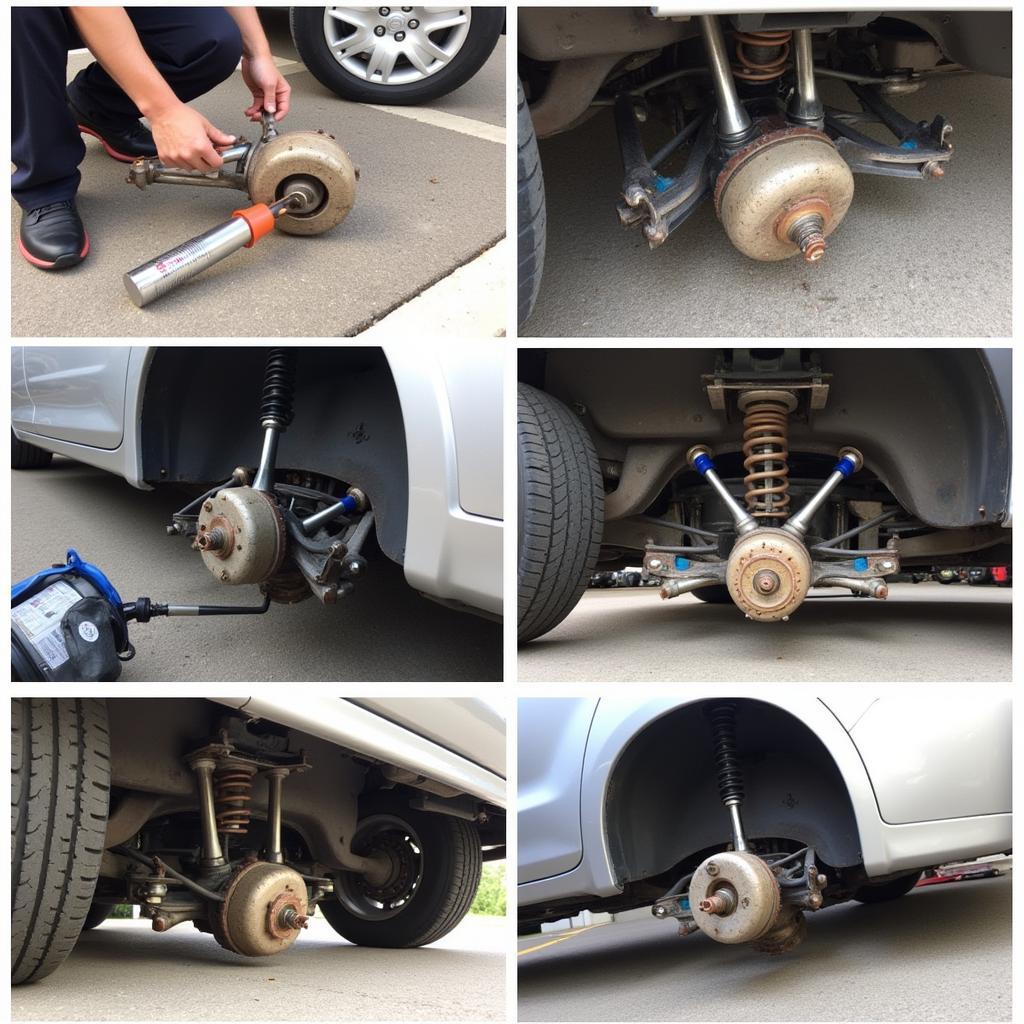Fixing a scratch on your car bumper can seem daunting, but it’s often a manageable DIY project. Whether it’s a minor scuff or a deeper gouge, understanding the type of damage and the right repair techniques can save you money and keep your car looking its best. This guide will walk you through how to assess the scratch, choose the appropriate repair method, and execute the fix effectively. how to fix a scratch on your car bumper
Assessing the Damage: Is it a Scratch, Scuff, or Gouge?
Before you start fixing a scratch on your car bumper, it’s crucial to determine the extent of the damage. A minor scuff might only require a simple cleaning and buffing, while a deep scratch that penetrates the paint will need more extensive repair. Identifying the type of damage will help you choose the right approach and avoid unnecessary work.
- Scuffs: These are superficial marks that haven’t penetrated the clear coat. They often appear as white or light-colored streaks and can often be removed with a good polish.
- Light Scratches: These scratches have gone through the clear coat and may be slightly visible on the paint layer. Repairing these often involves using a rubbing compound or touch-up paint.
- Deep Scratches: These have penetrated the paint and primer, possibly exposing the bare plastic or metal underneath. Fixing deep scratches on car bumper often requires filling, sanding, priming, and painting.
DIY Bumper Scratch Repair Methods
Depending on the severity of the scratch, you have several DIY options:
Fixing Minor Scuffs and Scratches
For light imperfections, a simple cleaning and polishing can do the trick. Use a dedicated car wash soap and a microfiber towel to thoroughly clean the area. Then, apply a rubbing compound specifically designed for car paint. how much to fix a scratch on a car bumper
- Rubbing Compound Application: Apply a small amount of rubbing compound to a clean microfiber applicator pad and rub it onto the scratch using circular motions. Gradually increase the pressure until the scuff disappears. Finish by buffing the area with a clean microfiber towel.
Repairing Light to Moderate Scratches
If the scratch is more visible, you may need to use a touch-up paint pen or bottle. Ensure you choose the correct color code for your car.
- Touch-up Paint Application: Clean the scratched area thoroughly. Apply the touch-up paint carefully to the scratch, ensuring you don’t apply too much. Let it dry completely and then use a rubbing compound and polish to blend the repaired area with the surrounding paint.
How to Fix Deep Scratches on a Car Bumper?
Deep scratches require a more involved process:
- Clean the area: Thoroughly clean the damaged area with soap and water, removing any dirt or debris.
- Sand the scratch: Use fine-grit sandpaper (2000-grit) to smooth the edges of the scratch and remove any loose paint. fixing deep scratches on car bumper
- Apply primer: If the scratch has reached the bare plastic or metal, apply a thin coat of automotive primer to the affected area. Let it dry completely.
- Apply touch-up paint: Apply several thin coats of touch-up paint, allowing each coat to dry before applying the next.
- Sand and polish: Once the paint is dry, use fine-grit sandpaper to level the paint with the surrounding area. Then, use a rubbing compound and polish to achieve a smooth and even finish.
“Proper surface preparation is key to a successful bumper scratch repair,” advises John Smith, a veteran auto body technician with over 20 years of experience. “Taking the time to clean and properly sand the area will ensure the repair materials adhere correctly and result in a professional-looking finish.”
How to Fix Scratches on Plastic Car Bumpers
Plastic bumpers often require specific products designed for plastic repair. These products can fill in the scratch and create a more durable repair. fix scratches on bumpers cars how to fix scratches on plastic car bumper
- Plastic Bumper Repair Kits: These kits usually include a filler, adhesive promoter, and applicator. Follow the manufacturer’s instructions carefully for the best results. Often, the process involves cleaning the area, applying the adhesive promoter, filling the scratch with the filler, and then sanding and painting the repaired area.
“When working with plastic bumpers, remember that they flex more than metal panels,” notes Sarah Johnson, an automotive paint specialist. “Using a flexible filler and paint designed specifically for plastic will help prevent the repair from cracking over time.”
Conclusion
Knowing how to fix a scratch on a car bumper can empower you to maintain your car’s appearance and potentially save money on professional repairs. By understanding the type of scratch and using the correct techniques and products, you can achieve impressive results. Remember to always follow product instructions and prioritize safety. If you’re unsure about any step, contacting a professional is always the best course of action. Connect with us at AutoTipPro for further assistance. Our phone number is +1 (641) 206-8880, and our office is located at 500 N St Mary’s St, San Antonio, TX 78205, United States.





Leave a Reply